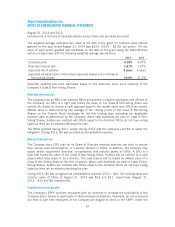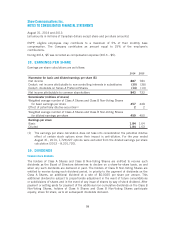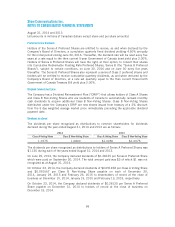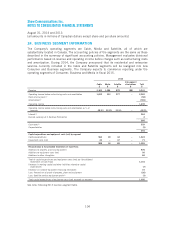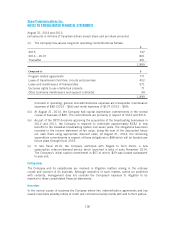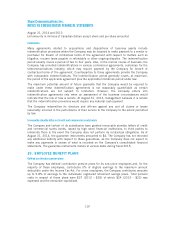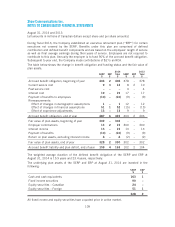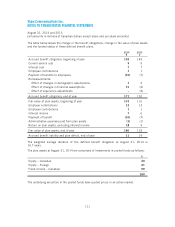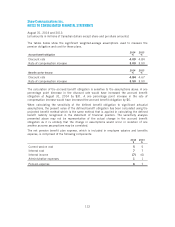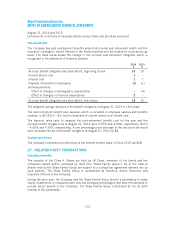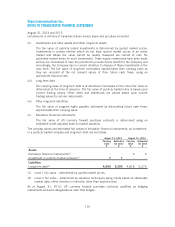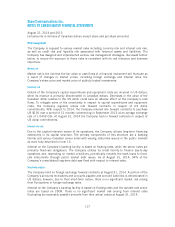Shaw 2014 Annual Report Download - page 111
Download and view the complete annual report
Please find page 111 of the 2014 Shaw annual report below. You can navigate through the pages in the report by either clicking on the pages listed below, or by using the keyword search tool below to find specific information within the annual report.Shaw Communications Inc.
NOTES TO CONSOLIDATED FINANCIAL STATEMENTS
August 31, 2014 and 2013
[all amounts in millions of Canadian dollars except share and per share amounts]
Indemnities
Many agreements related to acquisitions and dispositions of business assets include
indemnification provisions where the Company may be required to make payment to a vendor or
purchaser for breach of contractual terms of the agreement with respect to matters such as
litigation, income taxes payable or refundable or other ongoing disputes. The indemnification
period usually covers a period of two to four years. Also, in the normal course of business, the
Company has provided indemnifications in various commercial agreements, customary for the
telecommunications industry, which may require payment by the Company for breach of
contractual terms of the agreement. Counterparties to these agreements provide the Company
with comparable indemnifications. The indemnification period generally covers, at maximum,
the period of the applicable agreement plus the applicable limitations period under law.
The maximum potential amount of future payments that the Company would be required to
make under these indemnification agreements is not reasonably quantifiable as certain
indemnifications are not subject to limitation. However, the Company enters into
indemnification agreements only when an assessment of the business circumstances would
indicate that the risk of loss is remote. At August 31, 2014, management believes it is remote
that the indemnification provisions would require any material cash payment.
The Company indemnifies its directors and officers against any and all claims or losses
reasonably incurred in the performance of their service to the Company to the extent permitted
by law.
Irrevocable standby letters of credit and commercial surety bonds
The Company and certain of its subsidiaries have granted irrevocable standby letters of credit
and commercial surety bonds, issued by high rated financial institutions, to third parties to
indemnify them in the event the Company does not perform its contractual obligations. As of
August 31, 2014, the guarantee instruments amounted to $4. The Company has not recorded
any additional liability with respect to these guarantees, as the Company does not expect to
make any payments in excess of what is recorded on the Company’s consolidated financial
statements. The guarantee instruments mature at various dates during fiscal 2015.
26. EMPLOYEE BENEFIT PLANS
Defined contribution pension plans
The Company has defined contribution pension plans for its non-union employees and, for the
majority of these employees, contributes 5% of eligible earnings to the maximum amount
deductible under the Income Tax Act. For union employees, the Company contributes amounts
up to 9.8% of earnings to the individuals’ registered retirement savings plans. Total pension
costs in respect of these plans were $37 (2013 – $35) of which $24 (2013 – $23) was
expensed and the remainder capitalized.
107


